I am connecting the derail wires for DZ-2500 switch machines. Mt problem is that the section to add an insulator break is too far out for my liking, and interferes with power connectors already in that section. I tried using a 2" Gyro cutting wheel I have seen on this form by other users. The gap is a little wide for me. Can someone recommend something that would be finer? Thanks for any advise.
Replies sorted oldest to newest
You can fill the gaps with styrene strips.



I use a 2 inch abrasive disk in my Dremel tool to cut rail. It leaves a gap of about 1/16. A thin hand held razor saw my make a thinner cut but harder and takes longer.
Also note that the two short rails near the frog can touch. A small piece of styrene was used to seperate these two rails.

Cut a longer rail from an extra piece of track and glue or spike it down.
Try a Dremel 90° adaptor or cable extention drive along with normal Dremel REINFORCED cut off wheels. They are the thinnest discs and won't vaporize at the slightest twitch like the sandstone ones can. The diamond wheels normally wear too fast for my tastes but may be thinner(?)
The tools position and body diameter is the issue, both adaptors address the resulting angle. I'd look at a cable drive personally and ensure it has a thin, marker sized rotory hand "pen" vs a fat, finger gaurded, stylized and sterilized version.
Inline with the filler idea, masking the inside and rail top, and packing/smoothing JB weld in there as a filler and molding to a close finish with the tape should work well too. Sand and rasp file coarsely when at partial cure and fine cuts after a full cure. I've used tape to near seamlesslessly mold flush new flat and corner chunks and screw bosses back into cars and tenders, #90 button and turnout control cases too. Depending on length, you better have either some gap or freely shifting rails/curves to account for any possible temperature caused expansion in rail length once track is "warmed" during a hard session.
AMCDave posted:I use a 2 inch abrasive disk in my Dremel tool to cut rail. It leaves a gap of about 1/16. A thin hand held razor saw my make a thinner cut but harder and takes longer.
Thank you for everyone's ideas. The Gyro Wheel I am using is 1/32" thick. I never thought of the idea of filing the gap with a non conductive filler (plastic or filler). There are some nice 2 part epoxy putty at home depot. I was hoping something thinner than 1/32" thick.
Here is another solution to the derail connection.
I place a small spring with the wire connection attached between the rails. As the train passes, the wheel touches the spring and connects to the common side rail. No track cutting required.
choochoopaul posted:Here is another solution to the derail connection.
I place a small spring with the wire connection attached between the rails. As the train passes, the wheel touches the spring and connects to the common side rail. No track cutting required.
Could you provide photos and more details on this setup? Thanks.
sinclair posted:choochoopaul posted:Here is another solution to the derail connection.
I place a small spring with the wire connection attached between the rails. As the train passes, the wheel touches the spring and connects to the common side rail. No track cutting required.
Could you provide photos and more details on this setup? Thanks.
I would like to see it also. Sounds like a variant of a whisker switch without the moving parts. Sounds pretty clever.
Attachments
Excellent Idea Paul, thank you ![]()
I believe the Dremel #409 cut-off wheels have a 0.025" kerf which is the thinnest I've come across but like someone posted, they are very fragile, prone to easily breaking (safety glasses/googles are a must) and require a slow, steady hand.
Richie C. posted:I believe the Dremel #409 cut-off wheels have a 0.025" kerf which is the thinnest I've come across but like someone posted, they are very fragile, prone to easily breaking (safety glasses/googles are a must) and require a slow, steady hand.
I think safety first. 1/32 is Ok with plastic filler. Getting hurt doing something you love is not an option.
Dremel 456 abrasive cut-off wheel. Requires a 402 mandrel shaft. Safety glasses a must.
Also EZ456 abrasive cut-off wheel. Requires EZ402 mandrel shaft. These 1.5" X .045 cutters allow for relatively easy cutting of both Gargraves and Atlas Track.
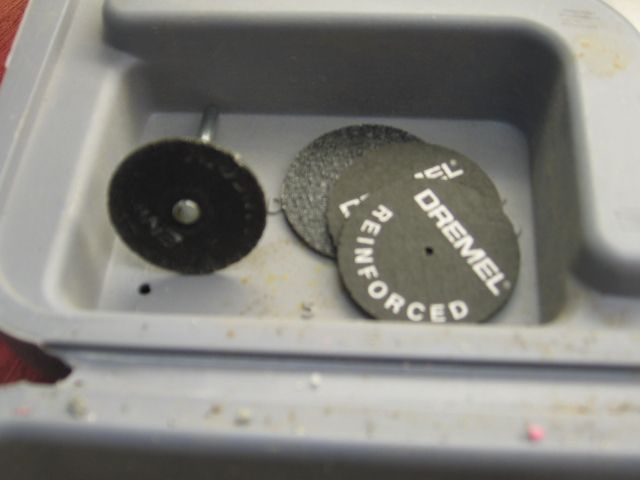
This small handsaw with a fine tooth sawzall blade can also cut track. 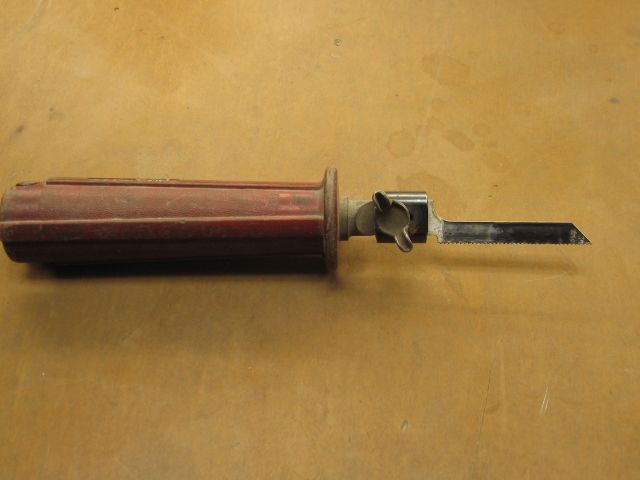
A bench disk sander can be used to true the ends of the track.
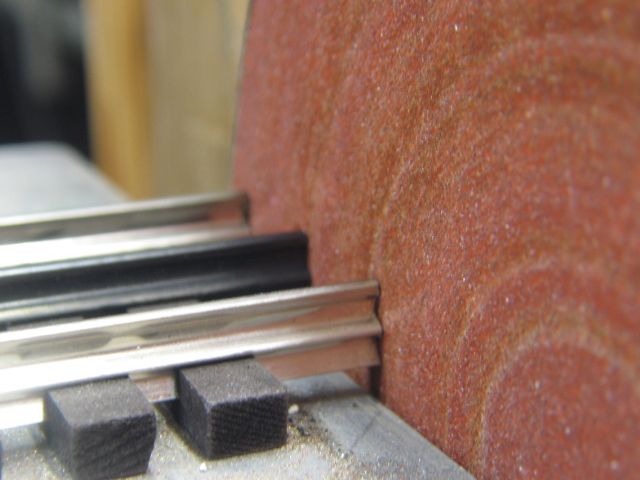
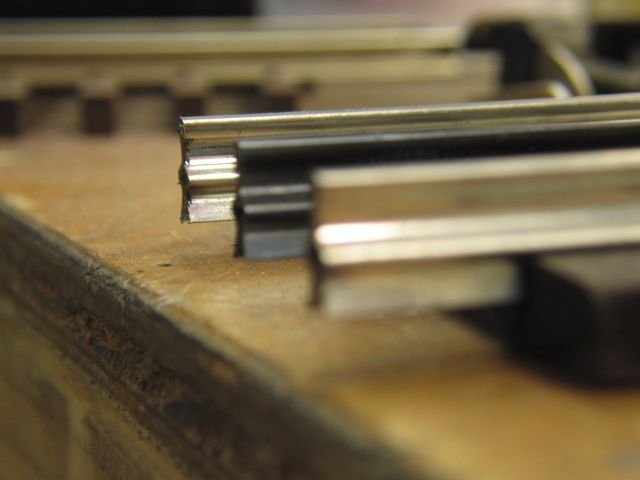
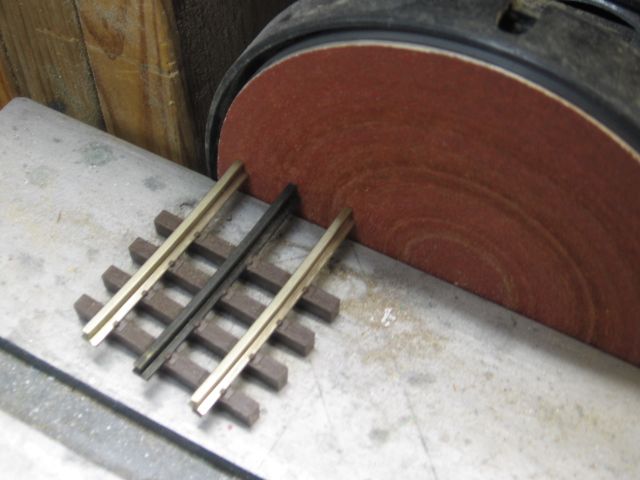
You can also use hot glue from a glue gun to fill gaps. Quick and easy. BigRail
Dremel 575 Right angle attachment.
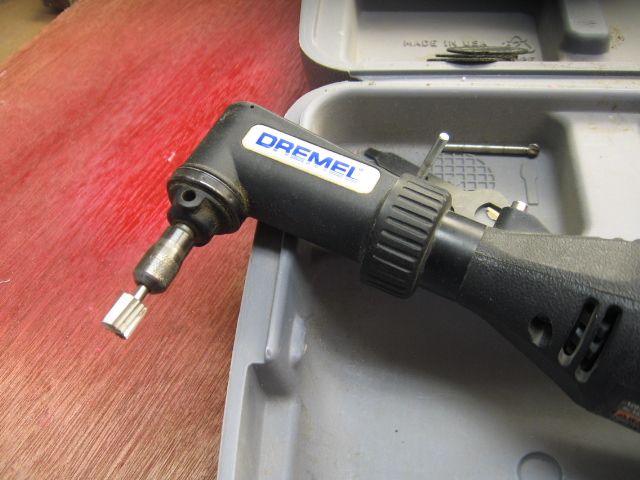
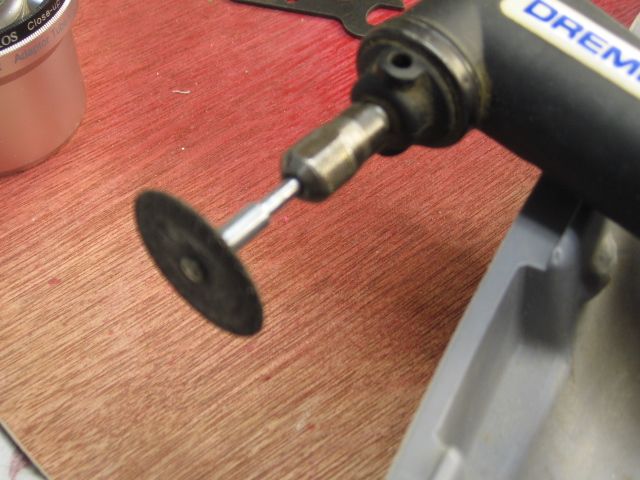
Standard Dremel wheels are 3/128" thick, FWIW.
If the Atlas turnout operators need a connection to the common power to operate the derail feature, this trick will work.
Very interesting thread and great ideas. Mikect, could you please explain the styrene piece more? What is the symptom and how does it solve it. Thanks.
Not to divert the thread....
Paul, what size are the hold down screws and how do they not split the wood cross ties? They look big.
thanks.
The spring assembly goes between the ties, screw size is #6.
hokie71 posted:Very interesting thread and great ideas. Mikect, could you please explain the styrene piece more? What is the symptom and how does it solve it. Thanks.
The cut was not really a problem and worked without the styrene. The track work is modular, and suffers a fair amount of abuse as it is transported and re-assembled. The styrene strengthens the track, and prevents it from moving. We have had the cuts close, and touch. The non-derail and the switch then doesn't work.
Atlas has non-metallic rail joiners that isolate track sections. Right center rail, picture below.





